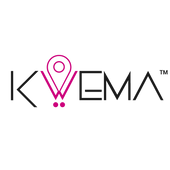Every September, National Preparedness Month reminds the country to get ready for the unexpected. For nurses, though, preparedness isn’t just a theme for one month, it’s a way of working every single day. Disasters, whether natural or man-made, place nurses on the front line of response. They keep the systems moving when everything else stalls.
Disasters: Care in the Middle of Chaos
Hurricanes cut off power. Floods wash away roads. Wildfires force towns to flee overnight. When communities are thrown into crisis, nurses are among the first to adapt. They triage when resources are limited, manage shelter clinics, and make sure no one gets left behind.
Preparedness here is about having a plan while also being ready to improvise with whatever is on hand. Clear communication protocols like rapid alerts or patient handoff procedures are critical in keeping teams aligned to reduce errors in the middle of chaos. \
Technology here also becomes a lifeline in disaster response. Reliable communication systems ensure teams are connected through paging networks while Digital Triage boards and electronic records help nurses track patients and coordinate when normal systems are down.

Human-Caused Disasters
Not all emergencies are driven by nature. Nurses are also at the center of mass shootings among other violent events. These moments are chaotic and unforgiving with casualties flooding ER and limited space and minutes that matter. Preparedness in this setting comes from knowing how to keep order when panic is everywhere.
But it doesn’t end once the rush is over. Nurses remain at the bedside of survivors in the weeks that follow, offering both medical care and quiet support.

The Missing Seat at the Table
Too often, emergency strategies are written at the policy level without the input of those who know bedside realities. Nurses see where systems break down and who gets left out when disaster strikes. Including them in preparedness planning makes the difference between a plan that works on paper and one that saves lives in practice.
True preparedness isn’t a binder on a shelf, but the people who are trained and trusted to respond. For every kind of disaster, nurses carry that role. They hold the line when nature lashes out, when violence erupts, or even when illness spreads through a community. Their presence turns panic into action and uncertainty into care.
National Preparedness Month is a reminder for the rest, but for nurses, readiness is every day.
